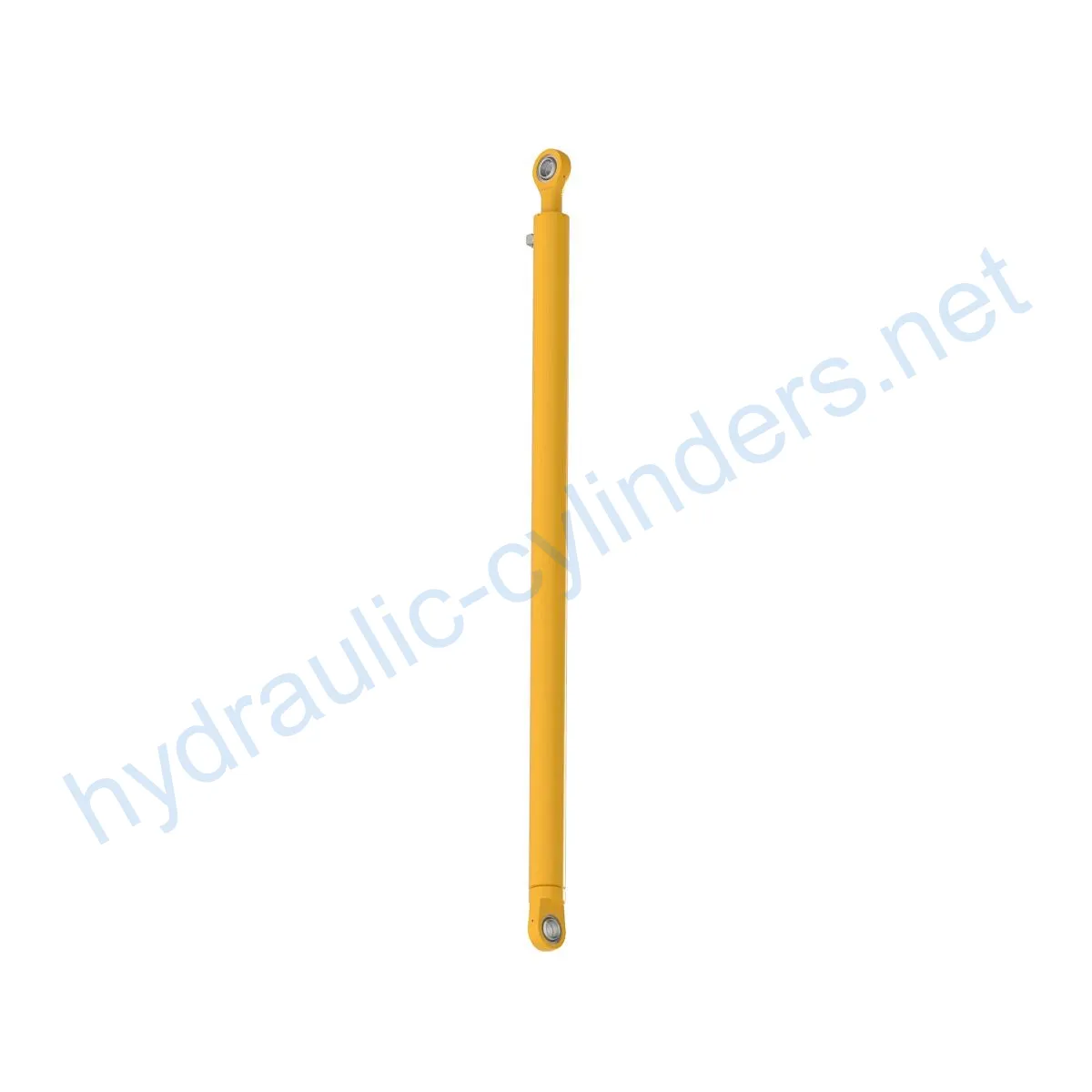Replacement Of AH222013 Hydraulic Cylinder
Replacement Of AH222013 Hydraulic Cylinder
Hydraulic cylinders are vital components in various heavy machinery, providing the force necessary for lifting, pushing, and moving loads. The Replacement Of AH222013 Hydraulic Cylinder is a high-quality replacement option that ensures optimal equipment performance and reliability.
Specifications
- Weight: 586.15 lb
- Height: 6 in
- Width: 8 in
- Length: 131.5 in
Compatible Models
- 350D
- 350D-II
- 350DW
- 400D
- 400D-II
Key Features
- Enhanced Equipment Performance: Replacing damaged or worn hydraulic cylinders restores the equipment’s normal operational capability, ensuring optimal performance in various applications.
- Improved Safety: Regularly replacing hydraulic cylinders reduces safety hazards caused by cylinder failures, ensuring the safety of operators and equipment.
- Overload Protection: New cylinder designs often incorporate better overload protection mechanisms, enhancing safety during operation.
- Quick Installation: Modern hydraulic cylinders are designed for easy installation and replacement, minimizing downtime.
- Standardized Components: Many hydraulic cylinders are standardized products, making it easier to obtain replacement parts in the market.
Applications
The Replacement Of AH222013 Hydraulic Cylinder finds various applications in different industries:
- Excavators: The hydraulic cylinder is commonly used in excavator arms or buckets, and it may require replacement due to long-term usage or overload to restore normal operation.
- Cranes: The lifting boom hydraulic cylinder in cranes undergoes frequent raising and lowering processes, making regular replacement necessary to ensure safety.
- Tractors: The front-end loader hydraulic cylinder in tractors may experience leaks or decreased performance during continuous lifting and tilting operations, requiring replacement.
- Harvesters: Hydraulic cylinders in harvesting equipment endure high pressure during operation, and timely replacement is essential to maintain work efficiency.
- Automated Production Lines: Hydraulic cylinders are used to control robotic arms and other automated equipment. Failure of cylinders can impact production efficiency and requires immediate replacement.
- Die Casting Machines: Hydraulic cylinders in die casting machines may experience performance decline under high pressure and temperature. Regular replacement ensures product quality.
- Mining Equipment: Hydraulic cylinders are used for lifting and moving heavy objects in mining equipment. Due to harsh working environments, regular inspection and replacement are necessary to prevent equipment failures.
- Bulldozers: The wear of hydraulic cylinders on the bulldozer’s blade can lead to a decrease in pushing capacity, necessitating timely replacement to maintain operational efficiency.
Maintenance Tasks
Regular maintenance tasks for hydraulic cylinders include:
- Periodic Inspections: Regularly inspecting the hydraulic cylinder for leaks, wear, and damage helps identify potential issues early.
- Proper Lubrication: Adequate lubrication with the recommended hydraulic oil ensures smooth operation and extends the cylinder’s lifespan.
- Seal Replacement: When seals show signs of wear or leakage, timely replacement is crucial to maintain proper functioning.
- Calibration Checks: Periodically verifying the cylinder’s calibration ensures accurate operation and prevents performance issues.
During installation, it is important to provide proper alignment guidance and recommend using suitable installation brackets to secure the cylinder. Additionally, following recommended inspection, repair, and replacement procedures, offering replacement parts and rebuilding services, and providing tips to enhance the lifespan of the hydraulic cylinder are essential for optimal usage.
Safety Considerations and Environmental Factors
When working with hydraulic cylinders, prioritizing safety measures is of utmost importance. Proper use of safety equipment, adherence to safety guidelines, and regular training ensure the well-being of operators and prevent accidents. Additionally, considering environmental factors and implementing environmentally friendly practices contribute to sustainable operations.
Troubleshooting and Common Issues
Common issues that may arise with hydraulic cylinders include:
- Leakage: If a hydraulic cylinder is experiencing leakage, it is essential to inspect and replace the damaged seals or components.
- Slow Operation: Slow cylinder movement can indicate a lack of proper lubrication or potential internal damage, requiring inspection and appropriate action.
- Uneven Movement: If the cylinder exhibits uneven movement or drifts, it could be a sign of internal damage or misalignment, necessitating troubleshooting and adjustment.
To address these problems, it is important to provide troubleshooting tips and solutions that help readers effectively diagnose and resolve issues. Furthermore, offering preventive measures to minimize potential problems can significantly improve the overall performance and reliability of the hydraulic cylinder.

Design Considerations and Selection Criteria
When selecting a hydraulic cylinder, several design considerations and selection criteria should be taken into account:
- Load-Bearing Capacity: Choose a cylinder that can handle the intended load to ensure safe and efficient operation.
- Sealing and Durability: Opt for cylinders with reliable sealing systems and durable materials to withstand demanding working conditions.
- Safety: Consider cylinders with built-in safety features such as overload protection mechanisms to enhance operator and equipment safety.
- Maintenance: Select cylinders that are easy to maintain and repair, reducing downtime and increasing productivity.
Proper sealing and lubrication are crucial for the hydraulic cylinder’s performance and longevity. Using appropriate seals, such as piston seals and rod seals made from wear-resistant materials like polyurethane and nitrile rubber, along with finely treated cylinder body and threaded end surfaces, enhances wear resistance. Regularly adding an adequate amount of hydraulic oil for lubrication is also necessary.
Regular Inspection and Preventive Maintenance
To ensure the hydraulic cylinder’s optimal performance and longevity, the following preventive maintenance measures should be implemented:
- Regular Inspections: Conduct routine inspections to identify and address any potential issues before they escalate.
- Proper Lubrication: Adequately lubricate the cylinder using the recommended hydraulic oil to minimize friction and wear.
- Seal Replacement: Replace worn or damaged seals promptly to maintain proper sealing and prevent leaks.
- Calibration Checks: Periodically check the cylinder’s calibration to ensure precise and accurate operation.
Providing a correct installation guide is crucial for ensuring proper assembly. This includes aligning the cylinder correctly, using appropriate installation brackets to secure the cylinder, and recommending recommended inspection, repair, and replacement procedures along with offering replacement parts and rebuilding services. Sharing techniques to extend the hydraulic cylinder’s lifespan is also beneficial.
About Our Company
We are a leading manufacturer and wholesale distributor of hydraulic cylinders, including the
参观我们的 VR 工厂
通过以下方式参观我们的 VR 工厂
液压缸应用:


